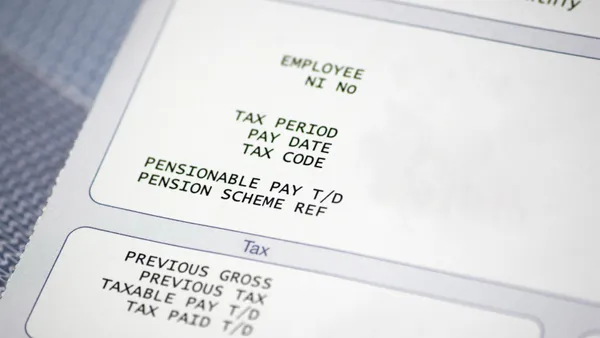Dive Brief:
- A gap exists between what artificial intelligence (AI) promises HR management and what it delivers, according to a paper published by professors at The Wharton School and ESSEC Business School.
- The study, Artificial Intelligence in Human Resources Management: Challenges and a Path Forward, highlighted four problems with AI in HR management: 1) complexity of HR outcomes (for example, measuring things such as performance is difficult and the results unreliable); 2) small data, generated by infrequent occurrences such as employee dismissals; 3) ethical or legal constraints, which generally require that decisions have explanations; and 4) employee reactions, which humans can monitor and control, but algorithms have trouble handling.
- The researchers recommended that employers get workers' input on outcomes, gauge the regularity of human decision-making used in training the algorithm, create an appeals process and collect data with improving the processes in mind first.
Dive Insight:
Machine learning technology promises to help HR prevent discrimination and identify bias, but solutions remain in their early stages. Penn State University and Columbia University researchers earlier this year announced an AI tool for detecting discrimination based on attributes like race and gender in recruiting, school admissions, policing and consumer finance. But some warn that machine learning algorithms also can create discrimination. For example, it was revealed last year that Google tried to develop a hiring algorithm that ultimately duplicated a hiring bias against women.
As the Wharton and ESSEC researchers noted, HR must ask the right questions when considering AI solutions. After all, employers are ultimately responsible for preventing discrimination and the U.S. Equal Employment Opportunity Commission has warned that it will be looking at big data use. One academic studying automated hiring previously told HR Dive that recruiters can ask potential third-party partners offering AI solutions the following to ensure that their algorithms are reliable: "What is your algorithm's training corpus, and how are you cleaning it and teaching it to eliminate bias over time?"
Cost remains a barrier, too. As a solution, the researchers suggested integrating HR data with financial data; when decision makers can see how both sets of data interconnect, they'll be better able to decide whether and how resources can be allocated to support HR functions.












